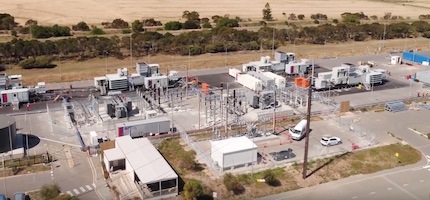How Aging Power Grid Infrastructure is More Costly

A significant percentage of generation technology is becoming outdated and inefficient and is approaching the end of its lifecycle, which means it is less cost-effective than today’s latest technology. In this post, we’ll share challenges associated with older technology, along with the benefits of optimizing modern technology, then share a distributed power generation case study.
End-of-Life-Cycle Infrastructure
When new, the outdated technology were highly venerated. By now, though, this aging infrastructure is often creating the following challenges; it typically is:
- increasingly less reliable
- consuming more fuel, increasing the amount of money spent overall
- producing higher emissions
- requiring more frequent maintenance
- prone to potential or complete plant failures
Benefits of Highly Efficient Power
When grid performance is optimized with modern and reliable technology, you can benefit in numerous key ways, including:
- an immediate realization of fuel efficiency savings
- cleaner, more reliable, energy-efficient power
- incremental savings through reduced maintenance costs
Companies can fast track fuel efficiency savings through the replacement of old equipment with the newer power generation technology. To achieve optimized savings, APR Energy uses a targeted, prioritized approach to leverage fast track capabilities, which translates into quick savings delivery to customers. Our goal is to build a long-lasting relationship with each of our customers and offer custom solutions to fit their specific requirements. Here’s just one example (with additional case studies here.)
Modern Technology Combined with Industrial Leading Expertise
The South Australian Power Networks faced serious energy-related challenges. In just six months, they experienced multiple power outages, and the grid stability itself was at risk because of the significant reliance upon wind power—which was intermittent. As a related challenge, they needed to boost supplemental power supply to meet energy demands during peak summer times.
The reality is that, as energy infrastructure ages, they become more inefficient, also requiring more maintenance—which can boost operations cost. Emissions are likely poor in aging infrastructure, which presents challenges, especially in more developed countries with more stringent regulations. Here are specifics about what happened in South Australia.
The crisis began on July 7, 2016, when a sudden dip in wind destabilized the South Australia power grid. The dip was so significant that the entire state was plunged into darkness, with this blackout having major financial implications in the millions of dollars for energy-intensive industries.
On September 28, power generation equipment was damaged by severe thunderstorms accompanied by wind gusts up to 260 kilometers per hour, causing the second blackout. Nine of the state’s 13 operating wind farms shut down, instantly reducing overall power supply by 15%.
In December, a third power outage, although a smaller one, was the final impetus for South Australia’s government to announce a long-term energy strategy. This included the usage of mobile power plants to protect against future power outages and blackouts.
In 2017, SA Power Networks contracted with APR Energy to install nine GE TM2500 Gen8 mobile gas turbines in two sites by Adelaide in time for sweltering summer temperatures. This would provide generating capacity of 276MW.
Mobile gas turbines were selected to take advantage of multiple benefits:
- Their fast-start capability and in-built Power System Stabilizer technology play a crucial role in grid stability maintenance; this supports South Australia’s high reliance on intermittent renewable energy by:
- rapidly injecting large power blocks
- supporting grid voltage and frequency levels
- They provide significant environmental benefits, including:
- up to 94% lower NOx emissions
- significantly less carcinogenic particulate matter
- 20% less noise than the typical emissions-intensive diesel reciprocating engines
- These mobile gas turbines can seamlessly transition to natural gas.
These two plants were commissioned in early November, about three months after the first turbines were shipped, with completion well ahead of the deadline of December 1.
When Considering Power Generating Companies
We invite you to contact APR Energy online or by calling +1 (904) 223 2278 to benefit from our proven global results. To date, we have already delivered nearly 5GW of power capacity to more than 35 countries, worldwide.
